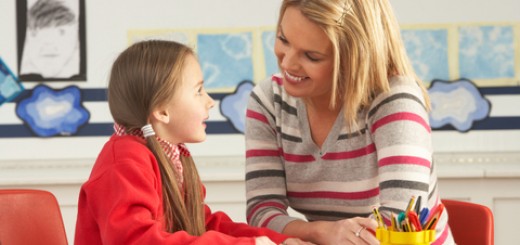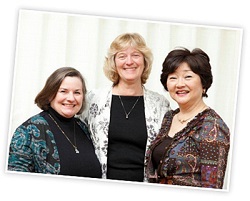Tips for teaching beginners
Recently, a friend on Twitter asked a question:
I sent a short answer — Twitter is limited to 140 characters, so all answers are short.
Well, the weekend came and went but as promised here are three simple tips for teaching beginners. The beginners I’m talking about typically between 4 and 6 years old, when many children begin attending language classes (as opposed to the ‘Mommy and me’ courses offered for infants and toddlers).
1. Teach in a way that let’s children use multiple senses.
We use all of our senses when using language. We look at people and at things, listen, and read to understand meaning. We speak, draw, write and use gestures to communicate. We even use our sense of taste and smell (how else do we learn what sour tastes like, or what a rose smells like?). Because using language involves all of our senses, it makes sense to teach language in a multi-sensory way. The easiest senses to incorporate into language teaching are visual (looking at pictures or reading, anticipating visual patterns), auditory (listening or singing a song, talking or listening in conversation), and kinesthetic (gestures, movement, rhythm). An easy guide is to try and involve at least two (and preferably all three) of these senses, or ways of learning, in every activity. This makes the most efficient use of limited class time, and gives every child a chance to learn via multiple channels.
It can be as simple as asking children to point to pictures in their books as they listen to vocabulary words. In addition to letting you see if they can understand the meaning of new vocabulary, they are using all three senses to learn — listening is auditory, pointing is kinesthetic, and the pictures in the book provide visual context for meaning.
My classes typically include a range of ages and abilities. In this video, students are listening/singing to a song, and holding up picture cards when they “their” color. The youngest students may not be singing, but they are still benefiting from using an auditory learning channel by listening to the song. As we repeat the song in class (as a warm up, or using different types of activities) they’ll begin to sing along with the older children. The children are using three senses, or learning channels, to help them learn color vocabulary.
2. Use rhythm and song to help children remember language patterns.
Beginners can’t read, so they need to remember new language by attaching it to images, or movement, or rhythm. Think about the songs and nursery rhymes you can remember from your own childhood. Music and rhythm is a powerful memory tool. If we also add a visual and kinesthetic element, then beginners will have much greater success in remembering new language. Pictures or real objects provide context for the meaning of most vocabulary in the early stages of language learning. Touching the pictures or moving the objects helps secure the meaning in memory. Actions provide context for the meaning of most verbs. Verb phrases like kick a ball, climb a tree, fly a kite all lend themselves to pantomime. It’s also important to teach verbs in the context of phrases, when the verbs typically take objects. Kick by itself, is less memorable than kick a ball and later it’s easy to ask students what other things can be kicked.
Conversations are also easier for students to learn in the context of a song or chant. It’s okay if young children don’t sing along at first. By participating with gestures and by introducing themselves, you’ll see that they understand the language. Understanding usually comes before speaking.
Once students are comfortable with the language, they can practice short conversations with puppets, toys, or in role plays.
3. Use game-like drills to build fluency.
Beginners need a lot of repetition to help them become fluent with new words, but there’s no reason that repetition has to be boring. Drills like Ritsuko’s Six-Second Drill are an excellent example of adding a play-like feeling to a drill that provides many opportunities for all children to practice.
A good rule of thumb is to limit new vocabulary to four or five new words for young beginners, and six to eight new words at one time for older children starting English. Try to teach just one new thing at a time. Teach new vocabulary in the context of familiar language patterns. Teach new patterns using familiar vocabulary. And recycle, recycle, recycle!
Picture race is a game from the Let’s Go Teacher’s Book that students always enjoy. You can lay picture cards out on a desk in a row, or even use rows of vocabulary pictures in a coursebook if you’re in a large class without enough sets of picture cards for everyone. Students play in pairs, and begin at opposite ends of the row of pictures. Students point at each picture and say the word (or a sentence using the word, depending on ability), moving toward each other. When their fingers meet in the middle, they do Rock, Scissors, Paper. The winner of RSP stays in place, and the loser returns to the start and begins again. The first student to reach the end of the row wins the game. For very young learners, you can do the same activity with large picture cards in a row on the classroom floor. Notice how the children are using all three channels — visual, auditory, kinesthetic — to help them remember the vocabulary.
We’ll be sharing more activities and tips for teaching beginners in the future, and hope that other teachers who work with this age and ability group might share their ideas, too.
Note for teachers using Let’s Go 4th edition: What color is this? and The Hello Song are from Level One. The color vocabulary Teacher Cards are from Let’s Begin.










Recent Comments